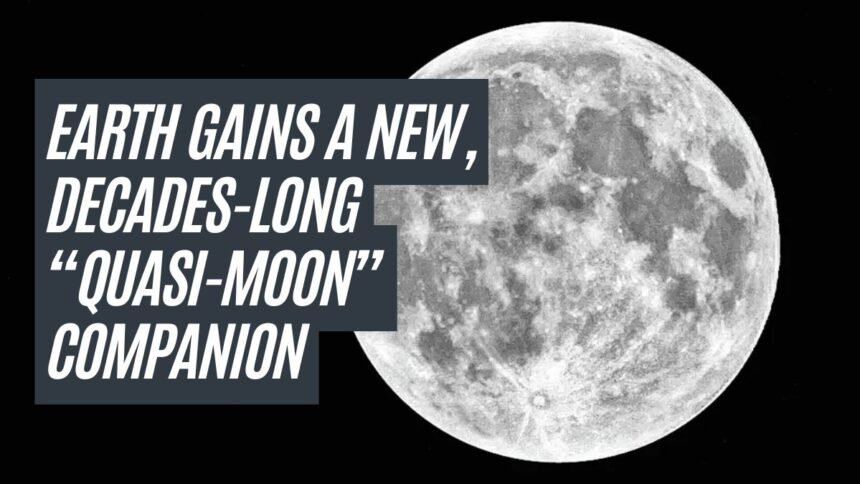Earth has a new, albeit temporary, roommate. NASA confirmed this week the discovery of 2025 PN7, a space rock now classified as a “quasi-moon,” a rare type of celestial object that shares our planet’s orbit around the sun. While not a true moon like our familiar lunar companion, 2025 PN7 keeps pace with Earth, effectively shadowing our planet as it journeys through space.
The newly identified quasi-moon, estimated to remain in Earth’s vicinity for decades, presents a unique opportunity for scientists to study near-Earth objects up close. Discovered by a team at the University of Hawaii using the Pan-STARRS observatory on the Haleakala volcano, 2025 PN7 was first observed on August 29. Archival data later revealed its presence in a similar Earth-like orbit for years prior.
“It’s exciting to realize we’ve had this little buddy hanging around for so long without even knowing it,” Dr. Kai Nakamura, lead researcher at the University of Hawaii’s Institute for Astronomy, stated at a press conference held earlier today. “Finding it now opens up possibilities to understand its composition and origin.”
Scientists estimate the object’s size ranges from 18 to 36 meters wide, about the height of a small building. Its dim magnitude of 26 made it exceedingly difficult to detect until now. “It’s simply too faint to be seen with amateur telescopes,” explained Nakamura. “You need specialized equipment like Pan-STARRS to pick up something that dim against the background of space.”
At its closest approach, 2025 PN7 comes within approximately 4 million kilometers of Earth, about ten times farther than the Moon. Its farthest distance can reach up to 17 million kilometers. Despite its proximity, NASA assures that there is no known risk of impact. “We’ve analyzed its trajectory extensively,” said Dr. Emily Carter, a NASA planetary defense specialist. “2025 PN7 poses no threat to Earth. Our models predict it will continue its current orbit for quite some time.”
The discovery adds 2025 PN7 to a short list of known quasi-satellites of Earth. These include objects like 164207 Cardea, 469219 Kamo‘oalewa, (277810) 2006 FV35, 2013 LX28, 2014 OL339, and 2023 FW13. One of these, Kamo‘oalewa, has garnered significant interest due to theories suggesting it may be a fragment of the Moon.
“Kamo‘oalewa is particularly interesting because its spectral properties hint at a lunar origin,” noted Dr. David Chen, a research scientist at the California Institute of Technology. He added, “It could have been knocked off the Moon by an asteroid impact long ago.” In fact, Kamo‘oalewa is one of the destinations for China’s Tianwen-2 mission, launched in May. The mission aims to collect and return samples from the space rock in 2027.
Models suggest that 2025 PN7 has been in our neighborhood for decades and could remain until around 2083. The long-term presence of the quasi-moon offers a rare chance for sustained observation. “Unlike a flyby asteroid, we can study 2025 PN7 over a longer period,” asserted Dr. Nakamura. “This allows us to refine our understanding of its orbital dynamics and physical characteristics.”
The University of Hawaii’s Pan-STARRS observatory, which made the discovery, is part of a larger effort to identify and catalog near-Earth objects that could pose a hazard to our planet. The system scans the sky nightly, searching for asteroids and comets whose orbits bring them close to Earth. The discovery of 2025 PN7 highlights the importance of such ongoing surveys, even when the objects discovered do not represent a direct threat.
“This discovery is a testament to the dedication and hard work of the entire Pan-STARRS team,” Dr. Nakamura beamed. “It underscores the importance of continued investment in planetary defense and astronomical research. There are potentially many more of these quasi-moons out there, just waiting to be found.”












